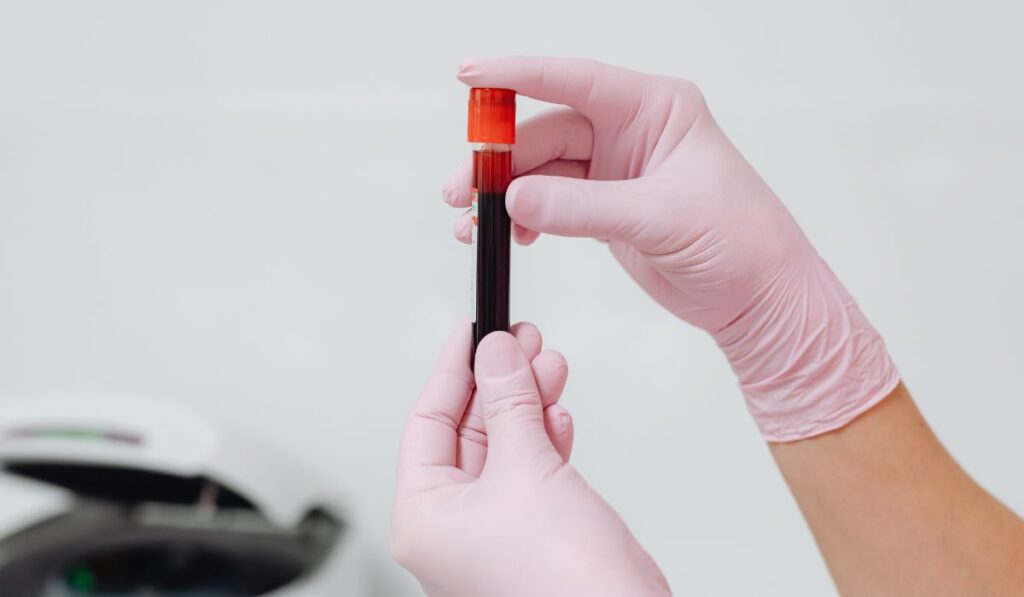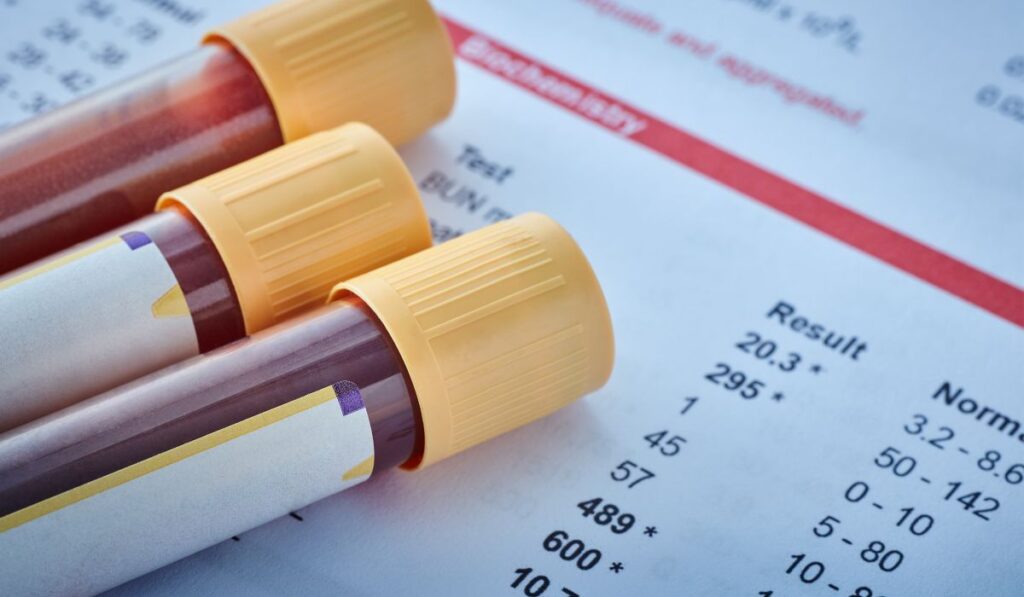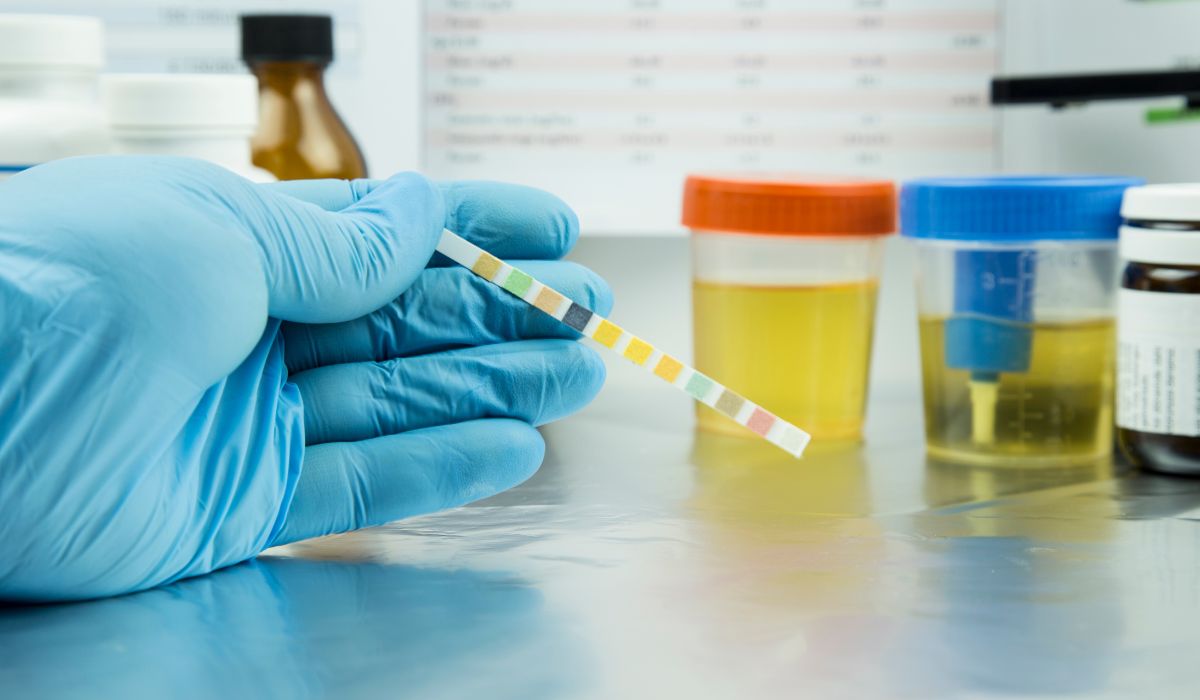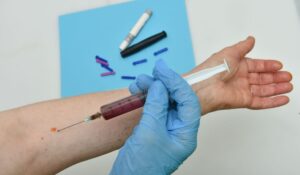Does Lorazepam Show Up on a Drug Test?
Lorazepam is a medication often used for anxiety disorder, insomnia, and seizure control. It is part of a group of drugs called benzodiazepines, which also include diazepam, clonazepam, and alprazolam. Many people wonder if lorazepam will appear on a drug test — especially patients in mental health treatment, substance abuse recovery, or therapy programs.
At Lynk Diagnostics, we help rehab facilities, health professionals, and physicians understand how lorazepam is detected, how long it stays in the body, and what types of tests can find it.
Clinically Reviewed by Kristina Westerdahl

What is Lorazepam?
Lorazepam is a controlled substance approved by the Food and Drug Administration. Doctors prescribe it to treat anxiety disorders, panic attacks, insomnia, and sometimes epilepsy or muscle spasms.
Lorazepam works by slowing down the central nervous system. It acts as an anxiolytic, hypnotic, and tranquilizer. It helps calm the brain by boosting the effect of a neurotransmitter called GABA.
Like other benzodiazepines, lorazepam can cause physical dependence if used for a long time. Misuse can lead to addiction, overdose, or relapse.
Why Would Lorazepam Show Up on a Drug Test?
Most drug tests screen for benzodiazepines. Because lorazepam is a benzodiazepine, it can be detected. A drug test looks for the metabolite lorazepam leaves behind after the body breaks it down.
Testing is common in:
- Outpatient and inpatient treatment programs
- Mental health and psychiatry visits
- Substance abuse recovery monitoring
- Workplace screening
- Forensic science and legal cases
How the Body Breaks Down Lorazepam
When you take lorazepam, your gastrointestinal tract absorbs it. It moves into your blood, where your metabolism in the liver processes it. Then, the drug’s metabolites leave your body through urine, saliva, or hair.
Several factors affect how fast lorazepam clears from your body:
- Dose taken
- Frequency of use
- Body composition
- Medical history and liver function
- Other medications like sertraline, antidepressants, or opioids
- Alcohol or other depressant use
Types of Drug Tests for Lorazepam
Urine Test
A urinalysis is the most common method. It can detect lorazepam for several days after last use.
Blood Test
A blood test is more accurate for recent use, often within hours to a day. It’s common in emergency department settings.
Saliva Testing
Saliva testing detects lorazepam for a short time after ingestion — usually less than 48 hours.
Hair Follicle Test
A hair follicle test can detect lorazepam for up to 90 days, making it useful for long-term benzodiazepine use disorder monitoring.
How Long Does Lorazepam Stay in Your System?
On average, lorazepam can be detected for:
- Urine: 2–6 days
- Blood: up to 3 days
- Saliva: up to 2 days
- Hair: up to 90 days
People with slower metabolism, older age, or certain health conditions may keep the drug in their system longer.
Can Lorazepam Cause False Positives or False Negatives?
Yes. Some medicines like oxaprozin (an anti-inflammatory) or certain antidepressants can cause false positives for benzodiazepines. On the other hand, low doses or fast clearance may cause false negatives.
Immunoassay tests — the first screening step — are more likely to show these errors. Labs use toxicology confirmation tests to be sure.
Risks of Lorazepam Use
While lorazepam can help with anxiety, panic, or seizure disorders, there are risks:
- Addiction and abuse
- Dizziness, confusion, or vomiting
- Slowed breathing and coma in high doses
- Worsening depression or relapse in recovery
- Dangerous when mixed with opioids like fentanyl, methadone, oxycodone, or hydrocodone
Because it’s a depressant, lorazepam can be deadly when combined with other drugs that slow the nervous system.
Lorazepam in Substance Abuse Recovery
In mental health treatment or rehab, lorazepam may be avoided due to benzodiazepine use disorder risk. At Lynk Diagnostics, we work closely with mental health professionals to ensure patients in treatment programs are tested when needed.
Some people in recovery may have a medical need for lorazepam — for example, for severe anxiety or after a panic attack. In these cases, physicians carefully monitor use and provide feedback during care.
What to Do if You Test Positive for Lorazepam
If a drug test shows lorazepam and you have a medical prescription, let the health professional know. Bring your prescription bottle and share your medical history.
If you do not have a prescription, testing positive could lead to:
- Insurance complications
- Changes in your therapy or treatment program
- Loss of work or legal issues
- Referral to detoxification or recovery village programs
How Testing Supports Recovery
Drug testing for lorazepam is not just about catching misuse — it’s also about supporting health, recovery, and safety. Testing can help:
- Prevent dangerous drug mixing with opiates or methamphetamine
- Monitor medication levels for anxiety disorder or epilepsy treatment
- Keep patients accountable in outpatient care
- Provide evidence for American Addiction Centers or SAMHSA guidelines
Coping Without Lorazepam
If you have stress, headache, insomnia, or panic, other treatment programs and skills may help:
- Dialectical behavior therapy for anxiety and addiction
- Non-drug coping strategies like deep breathing or muscle relaxation
- Medical prescription alternatives like certain antidepressants or sertraline
- Healthy lifestyle changes for sleep and mental health
The Role of Lynk Diagnostics
Lynk Diagnostics provides reliable drug testing for rehab facilities in Oregon and beyond. We use advanced toxicology and forensic science tools to detect lorazepam, even in complex cases.
Our team works with:
- Physicians and psychiatry specialists
- Mental health professionals
- Substance abuse counselors
- Outpatient and inpatient programs
We understand the balance between privacy, safety, and recovery.
Final Thoughts
Lorazepam will show up on most standard benzodiazepine drug tests. The detection window depends on the type of test, your dose, and your metabolism. Testing plays a key role in both health care and addiction recovery.
If you need accurate testing for lorazepam, Lynk Diagnostics can help — whether you’re a patient, provider, or treatment program director.

FAQs
How long does lorazepam stay in your urine?
Lorazepam can show up in a urine test for about 2–6 days, depending on your dose, frequency of use, and metabolism.
Can lorazepam cause a false positive?
Yes. Some drugs, like oxaprozin or certain antidepressants, may cause false positives in initial immunoassay tests.
Will lorazepam show on a blood test?
Yes. A blood test can detect lorazepam for up to 3 days after last use. It’s often used in emergency department cases.
Does lorazepam show in a hair follicle test?
Yes. Hair follicle tests can detect lorazepam for up to 90 days, making them useful for long-term benzodiazepine use disorder monitoring.
What should I do if I test positive but have a prescription?
Tell the health professional or lab. Show your medical prescription and provide your medical history to avoid misunderstandings. Contact us for more information on drug testing.








